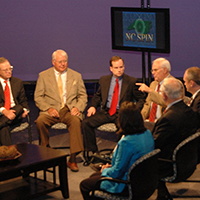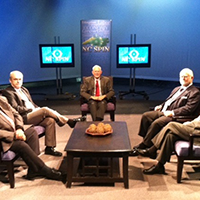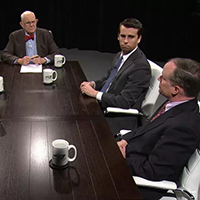How House Republicans fumbled Billy Graham's statue
Published April 23, 2015
by Patrick Gannon, The Insider, April 21, 2015.
The state House last week passed a bill that ultimately would place a statue of the Rev. Billy Graham in National Statuary Hall in the U.S. Capitol. The vote came after contentious debate between Republicans and Democrats over the issue, particularly about the process through which Graham, the North Carolina native and evangelist, was singled out for the honor. All House Republicans and a handful of Democrats voted for the bill.
If passed by the Senate and signed by Gov. Pat McCrory, the legislation would start the process of selecting an artist to sculpt the likeness of Graham to place in the hall, where his statue would be one of two representing North Carolina. He would replace former Gov. Charles B. Aycock, a turn-of-the-century governor whose statue has resided in the Capitol since 1932. Aycock more recently has been criticized for white supremacist views.
Here are five reasons House Republicans should have taken greater care in handling this topic:
1) It's a big deal. North Carolina, like the other states, gets two statues to represent it to the thousands of visitors each day at National Statutory Hall in the U.S. Capitol. The statue that replaces Aycock's will remain there for decades, if not forever. This decision shouldn't be made quickly or taken lightly.
2) The method of selection was arbitrary. Rep. Charles Jeter, a Mecklenburg County Republican and the bill's primary sponsor, acknowledged on the House floor that the idea came to him during a stroll through Statuary Hall. In consultation with others, he decided Graham was the "best person" to represent North Carolina.
The people of the state should have more of a say in the process. Perhaps a nomination and selection committee should have been appointed and public hearings held. Or maybe North Carolinians should have decided among different candidates in a vote.
3) The legislative process used to pass the bill was unusual. House Bill 540 was brought to the House floor for a vote without being heard by a committee. Almost every bill that becomes law in the state first goes through the committee process. Yes, on occasion, bills get sent directly to the floor. But it's rare and shouldn't be a process lawmakers use for important legislation.
4) Aren't other credible candidates out there? Jeter pointed out that any other legislator could have filed a bill to replace Aycock's statue with someone else, and he's right. But just because no one did doesn't make his bill perfect or justify it being rammed through without proper discussion and debate. On the House floor, Democrats mentioned such names as Julius Chambers, an African-American civil rights leader, lawyer and educator, and Maj. Gen. William C. Lee of Dunn, known as "Father of the American Airborne." The late University of North Carolina men's basketball coach Dean Smith also was named. Certainly, others warrant consideration.
5) The controversy wasn't necessary. Graham might emerge from a better process, just like he did from bad process. Republicans, including Jeter, argued that the only reason Democrats opposed the process was because they didn't believe Graham was the right choice, and they didn't want to vote against him. But if Jeter and others were convinced that the majority of North Carolinians would agree Graham was the right choice, couldn't they have gone about it differently?
Graham very well might be the people's choice. But if this process wins out, we will never know.







